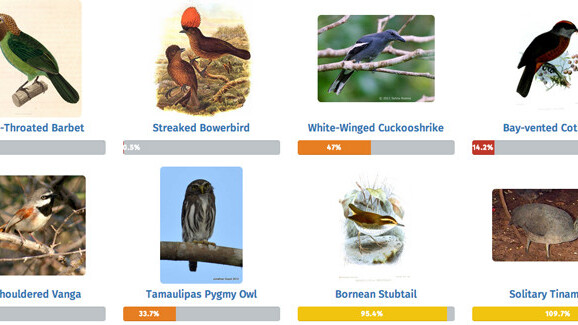
Extinction sucks. And with that in mind, it’s incumbent on humans to make sure that other species besides ourselves can inhabit the planet and support thriving populations for generations to come.
Another resource has now made its way into the toolkit to help with the critical task of protecting biodiversity. Map of Life has pre-released a new service powered by the Google Earth engine that can better define and locate at-risk species specifically in nature reserves.
The new service, announced in a Google Research Blog post, uses biodiversity data and high-resolution habitat information to locate and evaluate the actual conditions of species in greater detail than ever. “This allows a transparent, interactive assessment of species potential representation in reserves,” according to the Map of Life blog. “The highlighted species flag the much diminished range size and large conservation gaps remaining, especially in habitat specialists.”
Naturalists, conservationists, national resource managers, global threat assessors and concerned citizens can use the tool, and other Map of Life resources, to target the most threatened species and gather enhanced information for appropriate conservation efforts.
The Google post cited an example of the Tamaulipas Pygmy Owl, one of the smallest owls in the world. While it already has a well-defined map range, the tool also analyzed the available habitat within that range and found it to be significantly smaller and with fewer protections than the map suggests.
The tool similarly lets users adjust various settings to explore how certain changed parameters affect the map.
A demo of this tool for 15 species was pre-released in November at the World Parks Congress. This interactive evaluation will now be expanded to thousands of additional species in the next few months, the blog states.
➤ Map of Life: A preview of how to evaluate species conservation with Google Earth Engine
Get the TNW newsletter
Get the most important tech news in your inbox each week.






